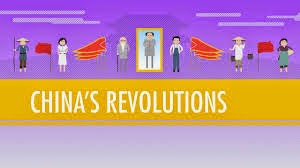Chapter 23 Note Taking Guide
Chapter
23, Independence and Development in the
Global South, 1914-Present
Toward
Freedom: Struggles for Independence
1.
The process for independence or decolonization marked a dramatic change
in the world’s political structure. What
did decolonization signal?
2.
What was distinctive about the end of Europe’s African and Asian empires
compared to other cases of imperial disintegration?
3.
What international circumstances and social changes contributed to the
end of European colonial empires?
4.
What obstacles confronted the leaders of movements for independence?
·
·
·
Comparing Freedom Struggles
5.
What were the initial aims of the Indian National Congress (INC 1885)?
6. What was Gandhi’s role in India’s
struggle for independence?
7.
What conflicts and differences divided India’s nationalist movement?
8.
What did Gandhi and the INC finally agree to do amid the mounting
violence?
9.
Why did white rule last almost fifty years longer in South Africa than
it did in India (1994 versus 1947)?
10. Who were the “Boers” or “Afrikaners?”
11.
Why did the South Africans feel threatened by a black majority rule? (Economically? Racially?)
12.
What forms of opposition arose to contest the injustices of South
African life/
13.
How did Nelson Mandela lead the African National Congress (ANC)?
14.
After Mandela’s imprisonment, what direction did the South African
freedom struggle take?
15.
What was the international response to apartheid?
16.
How was the South African nationalist movement similar and different
than India’s?
Experiments
with Freedom
17.
What was the fate of many of the political parties that had led the
movements for independence in Africa after independence was achieved?
18.
Why was Africa’s experience with political democracy so different from that
of India?
19.
What accounts for the ups and downs of political democracy in
postcolonial Africa? Give at least three
examples.
20. In general,
which class benefited the most from independence in Africa?
21. What
obstacles impeded the economic development of third-world countries?
·
·
·
·
22. Which
countries, in general, have had the strongest record of economic growth?
23. Discuss Ataturk’s reforms in a Turkish society.
24. What were
the visible symbols of Ataturk’s revolutionary program?
25. In what
other ways did women gain new legal rights in Turkey?
26.
What effect did the Westernizing influences under the Shah of Iran have
on the nation of Iran?
27.
How did the Ayatollah Khomeini become the center of a growing movement
demanding the shah’s removal?
28. What effect
did his leadership have on Iran?
Explain the significance of each of the
following:
Indian National Congress—
Mohandas Gandhi—
Muhammad Ali Jinnah—
African National Congress—
Kemal Ataturk—
Ayatollah Khomeini—

